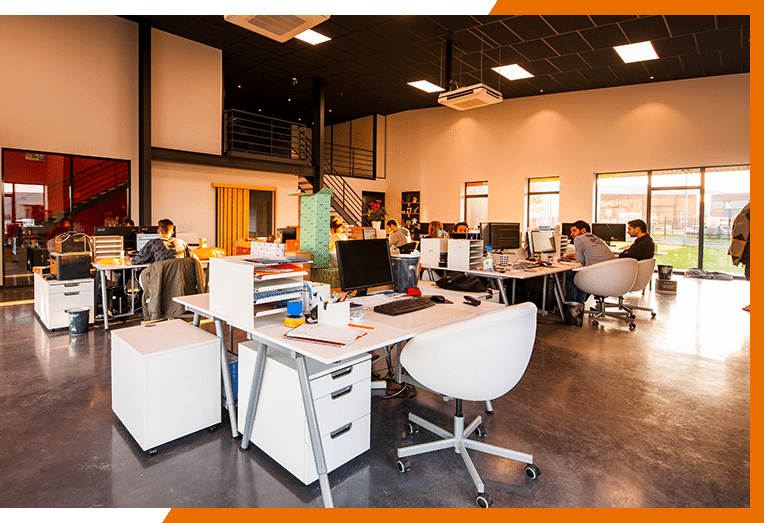The Beauty Lies in Simplicity
I previously wrote about how a Northern California Hospital leveraged Co-location and Lean Principles for design success. Anyone who has worked on projects of this size will agree that once the construction has started, change requests can quickly add up to dozens. Often enough, change happens quickly. And pretty soon, you end up with a pile of ASI's or ACD's that need to be initiated to keep the construction going. The hospital in Northern California had close to 200 ASI's or change orders, which rolled into what the team coined CDR's (change document requests).
In the past, someone would have a tracking spreadsheet on a computer. These spreadsheets were not visible; nobody saw them. We would reiterate once a week or twice a month to figure out what was going on. As a result, we arrived at a point in the project where the work may have stopped.
We knew we needed to develop a solution that is visible and accessible to everyone involved every week. In other words, something in our Co-location.
A low-tech solution with high visibility
Sometimes, a simple, hands-on solution can do the trick. What we came up with is a whiteboard with post-it notes. Simple and very effective. Colourful sticky notes are easy to grasp, highly visible, and everyone can understand them. Applying lean principles, we create consensus with everyone involved.
We distinguish two CDRs and allocate different coloured sticky notes to them:
- CDRs that impact on life safety, accessibility, and structural components in the building, in other words, material changes (Amended Construction Documents). A design coordination or installation issue usually drives an ACD, or the owner requires that we include a new product.
- Non-material changes, classified as Architect Supplemental Instructions (ASIs). An example is a request for a different paint colour.
As soon as a change request comes in, we add it to our list. Once we agree that we need to integrate this change request, we add it to the whiteboard. Together, we assign responsibilities and give the CDR a priority. Changes that impact construction will have a higher priority than the change of paint colour, for example.
The weekly meeting provides a framework for progress
On a practical level, we meet every Friday in our Co-location office. We follow a structured agenda to make sure everyone stays accountable and on track. Here’s what we look at:
- Six-week look-ahead from construction.
The contractor explains the scope of work for the next six weeks. We break it up by floor level, department, and renovation scope.
- We listen to schedule updates and jot down items on the whiteboard.
For example, the contractor explains that he will close the ceiling in the next six weeks, which means that the anchorage for the particular component that lives above the ceiling has to be resolved for us to close the ceiling. As a consequence, we look at relationships to the scope and what changes might impact it.
Then, we update the whiteboard and set priorities: if this is what’s coming up, we need to do this other thing first.
Each post-it note articulates the scope of the job, the proposed change, what area it is going to affect, who is responsible, and what they need to finish the job. Lastly, we add a date to ensure that nothing gets too old.
As soon as a new idea comes up, it lives in a section of the whiteboard we call the bullpen. There’s a section for ACDs and ASIs. Within the bullpen, we identify things that can be combined. Can we group them in a document that addresses several items? Does it make sense to create a package?
Next, we follow these three steps:
- The design team develops a draft package including all involved parties (trades and subcontractors).
- We send out the package ready for review for coordination and constructability.
- We submit all ACDs to OSHPD, California's Office of Statewide Health Planning and Development. ASIs are issued by the architect, which means they become directional, and the project can move forward.
The tasks are usually done within the following week, which means that the next Friday we move on to the next steps. As most of the team are co-located, we will find out within a day if one of the agreed tasks is not happening. People will ask what’s going on.
Conclusion
The beauty of this method lies in simplicity. It has proved to be very efficient with everybody involved, working together. It is transparent, fosters teamwork and accountability. Lastly, it helps manage expectations – a win-win for everyone.
Denis J. Stroup is a Healthcare Principal & Practice Group Leader with HGA in their Sacramento office. Denis has 28 years of experience focusing on lean integrated project delivery and acute healthcare design. He is a core group member of the Lean Construction Institute (LCI) NorCal Community of Practice and Co-Chair of training. Denis has a passion for building and sustaining a culture that fosters a highly collaborative environment where people do their best work.



